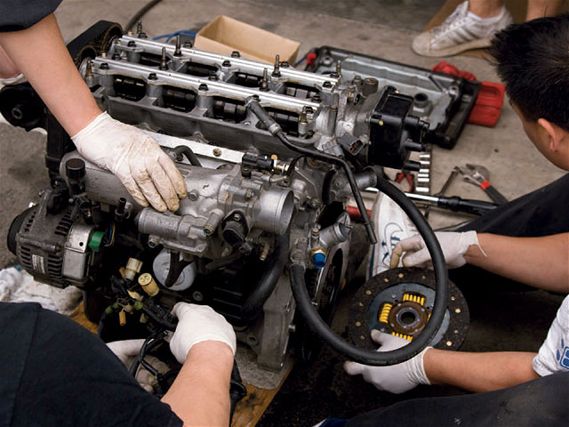 | Maintinance Tips - Getting Some Without Spending Some
| Maintinance Tips - Getting Some Without Spending Some
When it comes to modifying or even simply maintaining your ride, we're sure we can all agree that everyone would love to see a few quick and easy tips that are easy to follow and best of all, cost little or nothing. Here are a few that we've found useful in the past and remain timeless to this day. So go ahead, try a few! Got a tip of your own? We'd love to see it. Send them in [email protected] c/o Tips & Tricks, and if you have any pictures to illustrate your ideas, please include them.
How I-Vtec Works
VTEC (Variable Valve Timing and Lift Electronic Control) is Honda's famous cam and valve system, introduced in the early '90s. Ten years later, when everyone caught up with Honda, they introduced i-VTEC (intelligent-VTEC), the later and greater sequel. Why is it intelligent? Well, it's because of Honda's adjustable cam gear on the intake cam.
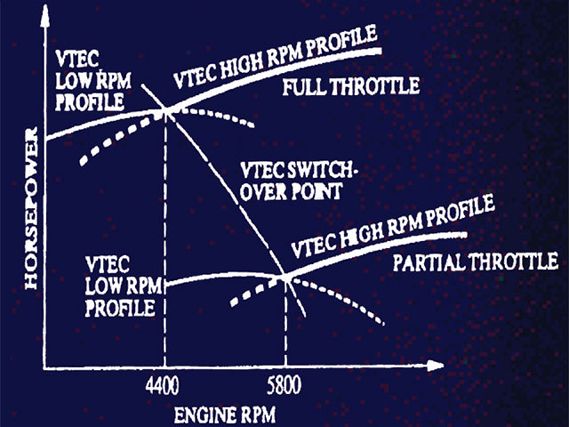 | Maintinance Tips - Getting Some Without Spending Some
| Maintinance Tips - Getting Some Without Spending Some
Let's recap how the original VTEC works. Having three lobes for each pair of valves, the two outer cam lobes have a profile that optimizes low-speed torque and response. The middle lobe has a high-lift, longer duration profile that is designed to optimize high-end horsepower. At low RPM, the middle rocker is idle. When the ECU reads the correct conditions (in RPM, vehicle speed, and coolant temperature) it starts to engage into the VTEC range. Oil fills the holes and pushes several pistons, and the three rockers for each intake and exhaust valve become locked together by the pin moving across. The middle rocker forces the two outer to follow the higher lift and longer duration profile of the middle cam lobe, allowing the engine to draw and expel more air and consequently produce more power. This allows the ECU to adjust the cam timing as it feels necessary. i-VTEC is still offered with multiple cam lobes per pair of valves, like its predecessor; one set for low end performance and one set for high end performance.
Take that and added adjustable cam timing and you have i-VTEC. The intake cam gear is adjustable just like aftermarket ones, but this is done electronically by the ECU. Adjustable timing allows the engine to be even more efficient in both ends of the power band. There are, however, two different versions of i-VTEC. The better of the two versions has three lobes per valves, on both the intake and the exhaust cams. The lesser performance, more economical version only has two cam lobes per valve, and that is only on the intake cam.
Air-Tight Graphics
Graphics are a surefire way to enhance a vehicle's looks. But if you're not careful when applying the vinyl, the final appearance can look like something my little brother could have done. OK, so it's not that hard to apply all those stickers, but what about those friggin' air bubbles after you've laid it down? Without removing the sticker applicator, use a credit card or a laminated-type driver's license to smooth over the surface and remove those unwanted air pockets. Peel back the applicator and use a pin to pop any leftovers.
Basic Maintenance
Schedule Every 3,000 Miles:
* Change engine oil and filter (every 5,000 miles if synthetic oil)
* Check automatic transmission/transaxle fluid level
* Check brake fluid level
* Check windshield washer fluid level
* Check radiator coolant level
* Check power steering fluid level
* Check tire wear and pressure
* Check manual transmission slave cylinder level
Every 6,000 Miles:
* Inspect and lubricate front suspension components where possible (especially aftermarket urethane bushings)
* Tighten all clamps
* Check manual transmission fluid level
* Check radiator and heater hoses for cracks, softness and leaks
* Check battery terminals for corrosion-remove, clean and reconnect terminals
* Check wiper blades for cracks or tears
* Check and clean air filter
* Check differential fluid
* Rotate tires
Every 12,000 Miles:Check front-wheel drive axles/boots
* Check brakes and repack wheel bearings
* Inspect ignition wires, distributor cap and rotor
* Change air filter
* Change manual transmission/transaxle fluid
* Change differential fluid
* Change engine coolant (drain, flush and fill)
* Change PCV valve
* Change fuel filter
* Change spark plugs
TIMING
Try advancing your timing two to three degrees above the stock timing. This is done by moving the distributor a little. You should get a bit more horsepower, but make sure you use 91 octane (or the highest octane you find at the pump). Using lower octane can cause detonation.
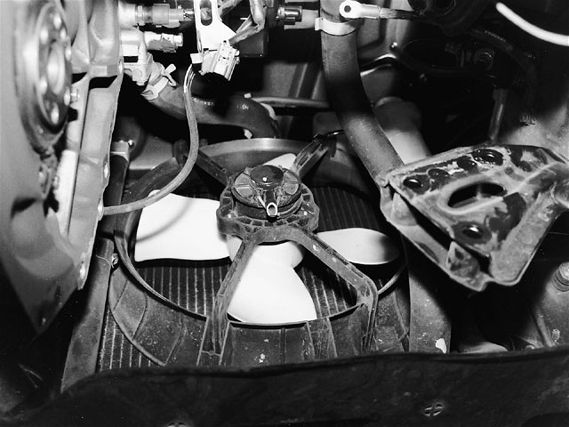 | Maintinance Tips - Getting Some Without Spending Some
| Maintinance Tips - Getting Some Without Spending Some
Fantime Anytime
Your car has two fans: one primary and one secondary, only for when the AC is on. You can splice into the AC fan by wiring up 12-volt switch. Now you can turn the second fan on whenever you want to keep the engine running cooler.
Every Nookand Cranny
For car shows, it's extremely important that you clean off every single part on your car. From the body to the rims and right down to the fenderwells, judges will check these areas; if they aren't clean, you lose points! A simple way to clean off the fenderwell of your car is to use a de-greaser or a heavy-duty cleaner and spray directly onto the surface. Let the excess drip off with the wonders of gravity, and you've just gained back your 10 points on the score sheet.
To Repair Or Not To Repair
When you buy a used car, one of the first things you end up doing is fixing things the previous owner didn't want to deal with. To learn how to fix your new used car, you'll need a repair manual. Many people we know go cheap and buy a Haynes or Chilton manual. Take our word for it: The extra money for a factory manual is always worth it. A factory manual will not only contain more details and more diagrams, it will be more correct and specific to your year and model.
Another great resource for common car problems is the Internet. Someone out there has the same car as you do and more than likely has had the same problem. Sometimes these guys are helpful enough to make a Web site documenting the common fix. Other times, the information is found in forums. Forums have been taking over the Internet (as well as my life -CT).
Listen Carefully
There should be an audible "whoosh" when the gas cap is removed from a car equipped with an evaporative control system (charcoal vapor canister). No sound indicates a vacuum leak in one of the ECS hoses, and vacuum leaks degrade engine performance.
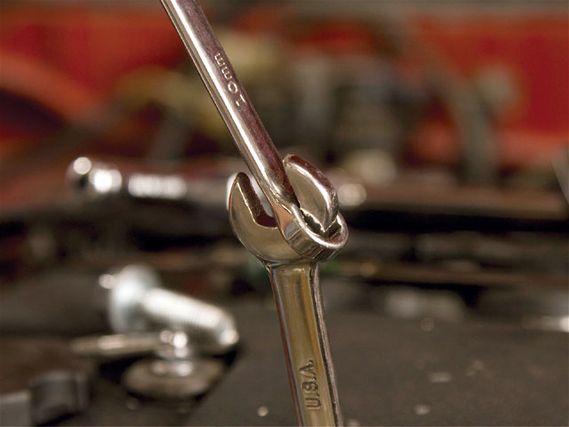 | Maintinance Tips - Getting Some Without Spending Some
| Maintinance Tips - Getting Some Without Spending Some
Extra Long Wrench
Sometimes the length of a wrench isn't long enough to provide all the torque you need. Just lock another one to the other end (open-end and close-end sides interlinked), and you'll get more torque for those hard nuts.
Parts, Please
When you have work done on your car that involves the installation of new parts, always ask to get your original parts back. Some shops will try to scam you by not replacing the worn parts but tweaking and cleaning up the old parts to make you think they did. Of course, the shops then bill you for the nonexistent new part. Getting your old part back ensures that there is a new one in there.
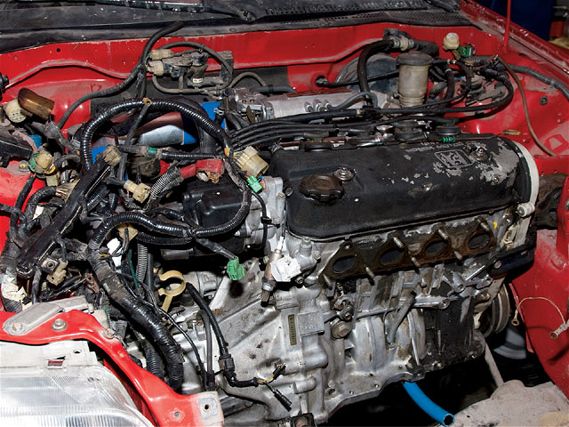 | Maintinance Tips - Getting Some Without Spending Some
| Maintinance Tips - Getting Some Without Spending Some
No H2O
Most people forget to cover up the electrical systems in their engine bay when steam-cleaning or detailing. Over time, the moisture can cause the electrical systems to short out. One way to prevent the untimely demise of your various electrical devices is to cover them with either foil or plastic wrap. Afterwards, you shouldn't have anymore problems.
Hondabond
Honda cam seals are notorious for warping/chipping, which leads to oil leaks. You can fix this by applying a little Hondabond sealant (can be found at your local Honda dealer) between the cam seal and cylinder head. Allow it to dry for a few minutes before starting your engine.
Rebuild It
When the time comes to replace your brake calipers, stop! True, you can go and purchase new ones, but that would mean empty pockets for you. You could also go the used route, but what if it's a shoddy set? A cost-effective way would be to purchase a caliper rebuild kit. Instructions are included and, best of all, you save a few bucks for yourself.
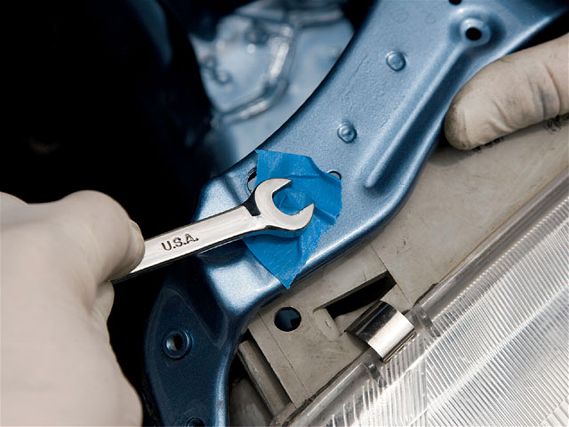 | Maintinance Tips - Getting Some Without Spending Some
| Maintinance Tips - Getting Some Without Spending Some
Cover Your Nuts
When you're installing new nuts and bolts, run a strip of masking tape around the nut, bolt or wrench head to prevent metal contact and thus avoid rounding off corners or damaging the plating. This also works to build up the corners of a rounded-off nut to help the wrench get a bite on it.
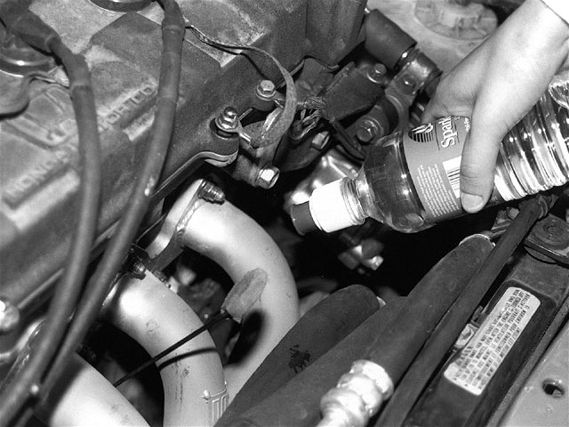 | Maintinance Tips - Getting Some Without Spending Some
| Maintinance Tips - Getting Some Without Spending Some
Water To The Rescue
If you're running an aftermarket header and think that one of the cylinders is misfiring, spray a small amount of water on each of the header tubes near the exhaust ports. If one of the cylinders is misfiring, the water on that runner will evaporate at a slower rate than the others.with rollbar foam padding. This will cushion the blow if the handle should hit your car.
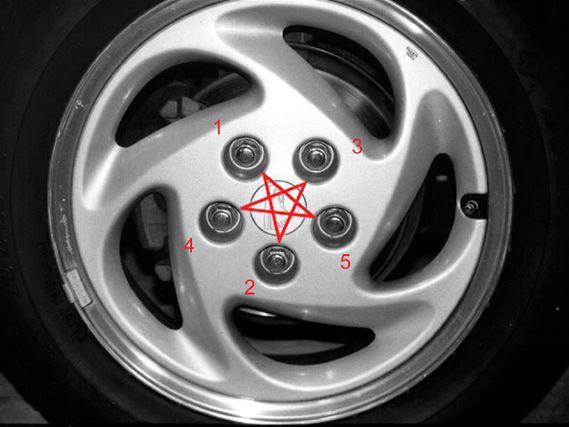 | Maintinance Tips - Getting Some Without Spending Some
| Maintinance Tips - Getting Some Without Spending Some
Righty Tighty
Improperly tightened wheel lugs can warp rotors, damage wheels and cause vibrations. Follow the proper sequence for tightening wheel lugs as shown. Always use a torque wrench to make sure you get the right torque value. For the correct torque value, check your owner's manual. It's also a good idea to check the torque of the lugs after you get your car back from a shop. If they did any work that involved removing the wheels, they most likely used an air-impact wrench. These are notorious for tightening the lugs too much and at different amounts.
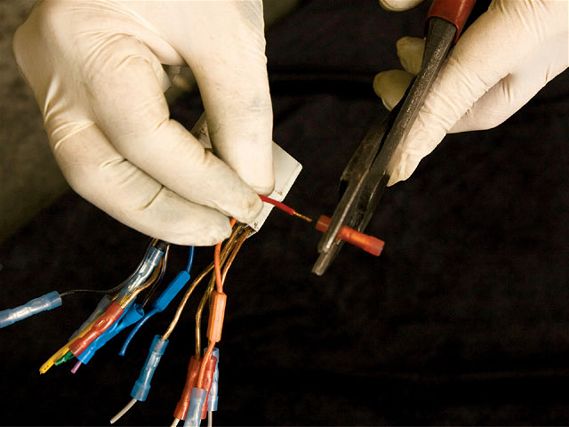 | Maintinance Tips - Getting Some Without Spending Some
| Maintinance Tips - Getting Some Without Spending Some
Crimpin' Your Style
Whenever you're working on the electrical system, instead of holding the wire and crimp with one hand and crimping with the other hand
Tape Revival
Rolls of tape that sit around too long tend to lose their adhesive effect. Take the roll and put it in the microwave for about 20 seconds. The heat will soften the adhesive, bringing back flexibility and tackiness to the tape.
Mark It
Engine timing relies on the cams and crank to be aligned by a belt. When you have to remove the belt, get some correction fluid and mark it where the belt and the cam gear meet. And when you put the belt back on, there is no chance of error.
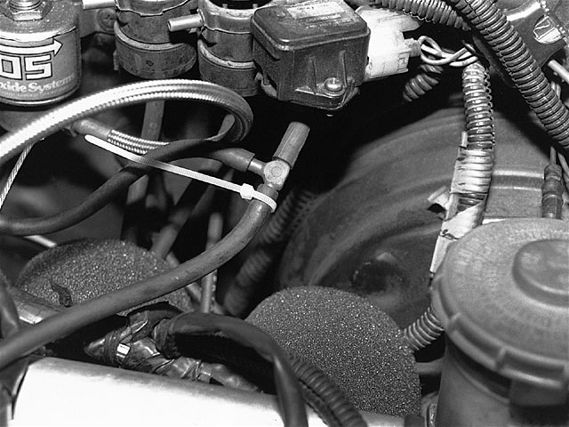 | Maintinance Tips - Getting Some Without Spending Some
| Maintinance Tips - Getting Some Without Spending Some
Strangle The Snake
Adding a turbo to a vehicle not only forces additional air into the engine, it puts pressure on various air lines in the intake system. This can cause vacuum lines on the intake manifold to blow off. And easy way to prevent this from happening is to simply zip-tie all the connections.
Hold the crimp in the crimper. Then place the wire into the crimp
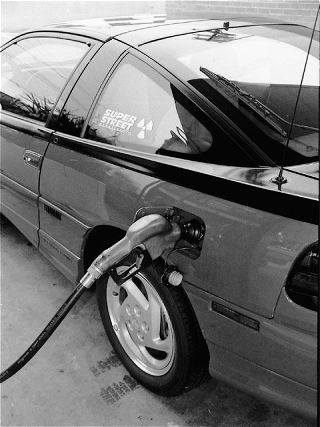 | Maintinance Tips - Getting Some Without Spending Some
| Maintinance Tips - Getting Some Without Spending Some
Gassing Up
Before you fill up your car with gas, take a quick peek around for the gas tanker truck. When the tanker truck dumps its fuel, sediment can be stirred up in the gas station's underground gas tanks. If you fill up your car right after the tanker truck arrived, you could end up pumping this sediment into your car.
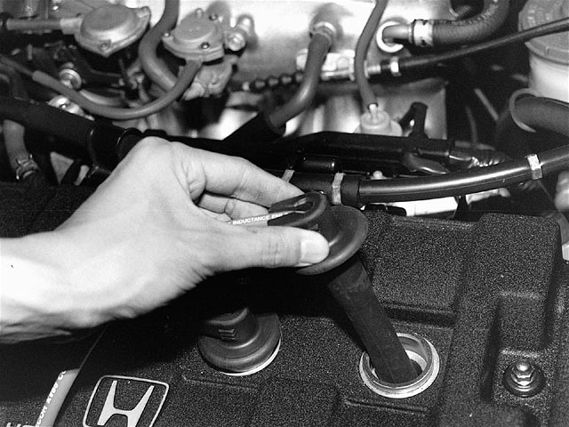 | Maintinance Tips - Getting Some Without Spending Some
| Maintinance Tips - Getting Some Without Spending Some
Cover It Up
It's always a clean look to cover your wiring with a wire loom. Another way to keep it even cleaner is to cover the wire loom with black electrical tape. Start from the bottom of the wire loom and wrap your way to the top. Doing this will hide the crack along the wire loom, which may open at any time to expose the wiring.
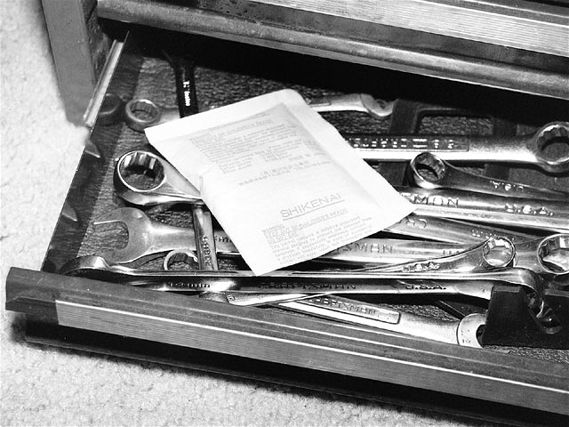 | Maintinance Tips - Getting Some Without Spending Some
| Maintinance Tips - Getting Some Without Spending Some
Keep Moisture Away
Those white pouches filed with tiny balls that you always find with electronic equipment and in shoes boxes can do wonders in preventing moisture problems. Toss a few of these sacks in your toolbox to reduce rust and oxidation on your tools. Don't forget to keep that toolbox closed.
No 'Monia!
If you have tinted windows, don't spray any ammonia products on the surface to clean them off. The ammonia fades the tint and kills the glue that binds the tint to the window. Use a product without ammonia in it, like Simple Green, to clean off the tint instead.
Don't Run It One
Some people hate stopping for gas so much, they wait until their car is out of gas and is basically running on just gas fumes. Contaminants in the gas tank will settle on the bottom of tank and picking up that last bit of gas is bad for your fuel pump, fuel filter and injectors. Don't wait for the warning light to come on; get gas when you're down to a quarter of a tank.
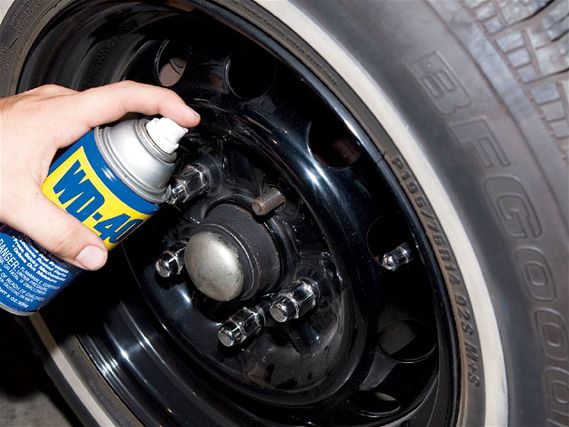 | Maintinance Tips - Getting Some Without Spending Some
| Maintinance Tips - Getting Some Without Spending Some
Lube It
Wheel studs tend to rust when they age. Spray some WD-40 or another lubricant onto the studs before installing the lug nuts. This will deter and clean the effects of road salts and other harmful elements. You'll also be able to get more accurate torque readings by doing this.
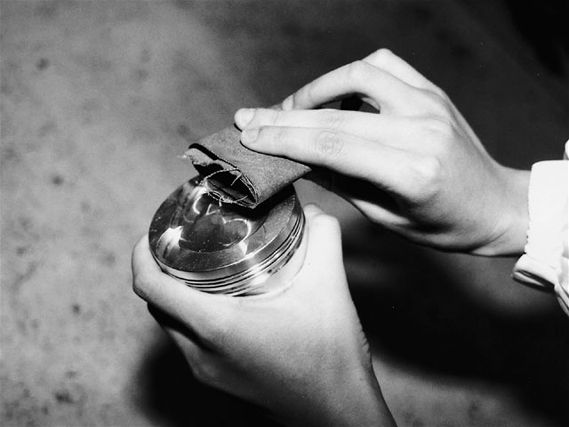 | Maintinance Tips - Getting Some Without Spending Some
| Maintinance Tips - Getting Some Without Spending Some
Sand It Down
After purchasing aftermarket pistons, sand down the sharp edges on the tops of the pistons. This will prevent the edges from heating up and causing detonation. Also, it wouldn't hurt to polish the tops with polishing compound. This will help keep carbon from sticking to the pistons.
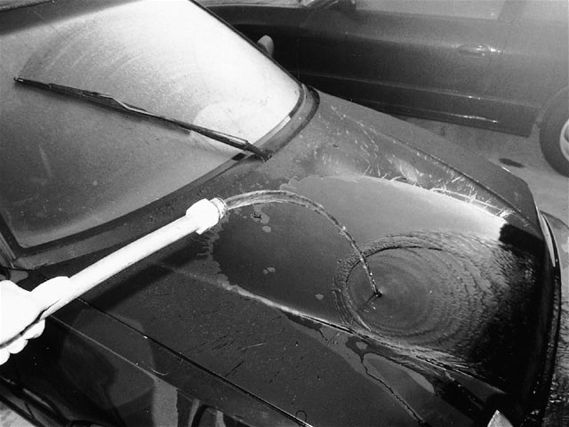 | Maintinance Tips - Getting Some Without Spending Some
| Maintinance Tips - Getting Some Without Spending Some
Let It Run
A good way to conserve time and water after you have finished soaping your car down is to let the water flow out naturally instead of through a nozzle spray or using your finger to cover the tip. This way, the water runs off faster and leaves less water to clear off, meaning less drying time for you and no more prune hands.
Dust On, Dust Off
It's always a bitch to clean off the air vents in your ride. Rolled up tissues or Q-Tips might not work. Use a smallish paintbrush; it works the best!
